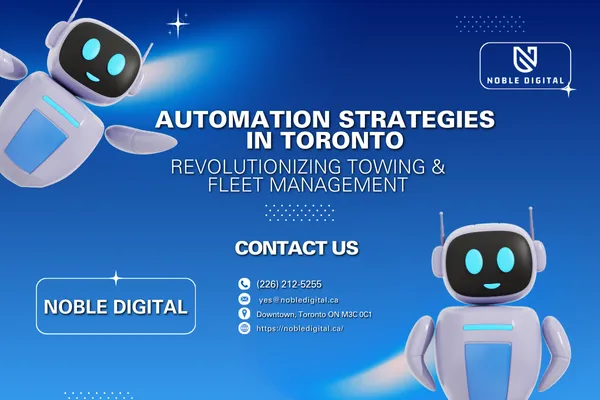
5 Automation Strategies for Effortless Toronto Fleets
Driving Efficiency: How Automation Strategies Are Revolutionizing Towing and Fleet Management in Toronto
In the fast-paced, congested streets of Toronto, efficiency isn't just a goal—it's a necessity for survival. For businesses reliant on mobility, like towing companies and fleet operators, manual processes can lead to delays, increased costs, and frustrated customers. This is where intelligent automation strategies are becoming a game-changer. By integrating smart technology, Toronto-based service providers can achieve unprecedented levels of operational efficiency, safety, and customer satisfaction.
This article explores the transformative power of automation strategies specifically within the context of Toronto's unique urban landscape, demonstrating how local businesses can leverage technology to stay ahead.
Understanding Automation in a Toronto Context
Toronto is a hub of economic activity, but its notorious traffic congestion, diverse weather conditions, and vast geographic spread present significant logistical challenges. Automation strategies refer to the use of technology—such as software, GPS, and AI—to perform tasks with minimal human intervention. For a towing company like Tuber Towing, this doesn't mean replacing drivers with robots. It means empowering them with tools that automate the thinking and coordinating, leading to faster response times and smarter resource allocation.
The goal is to create a seamless flow of information and action, from the initial customer call to the completed service. As leaders in Toronto's digital landscape, agencies like Noble Digital understand that a strong online presence and backend automation go hand-in-hand for modern service businesses.
Key Automation Strategies for Toronto Towing and Fleets
1. Intelligent Dispatch and Route Optimization
The core of any towing operation is the dispatch system. Traditional phone-based dispatching is slow and prone to error. Modern automation strategies use advanced software to:
Instant Job Assignment: When a service call comes in via a website form (like those built by Miobi), the system can automatically assign the nearest available truck based on real-time GPS location.
Dynamic Routing: Leveraging live traffic data from sources like Google Maps and traffic reports for Toronto, the software calculates the fastest route, avoiding accidents and construction. This is crucial for navigating cities like Mississauga, Brampton, and the downtown Toronto core.
Load Balancing: The system ensures workloads are evenly distributed among drivers, preventing burnout and maximizing the fleet's productivity.
2. Automated Customer Communication
A customer whose vehicle has broken down is already stressed. Keeping them informed reduces anxiety and builds trust. Automation can handle this effortlessly:
SMS Updates: Automatically send text messages confirming the job, providing the driver's ETA, name, and photo, and notifying upon arrival.
Status Portals: Customers can receive a link to track their service truck in real-time, similar to tracking a package delivery.
Post-Service Follow-ups: An automated email or text can be sent after service to request feedback, ensuring quality control and generating valuable testimonials.
3. Fleet Maintenance Automation
For fleet-heavy businesses, such as those operating AMT Truck vehicles, predictive maintenance is vital. Automated systems can:
Track vehicle mileage and engine hours.
Schedule maintenance tasks automatically before problems occur.
Order necessary parts by integrating with inventory systems.
This proactive approach, a key part of robust automation strategies, minimizes costly downtime and extends the lifespan of valuable assets.
4. Back-Office and Invoice Automation
The administrative burden can be immense. Automation streamlines these processes:
Digital Documentation: Drivers can use tablets to capture photos of the vehicle, collect digital signatures, and complete reports on-site.
Instant Invoicing: Once a job is marked complete, the system can generate and email the invoice immediately, speeding up cash flow. Integrating with payment processors like Stripe or Square allows for instant payment.
The Tangible Benefits of Implementing Automation
The adoption of sophisticated automation strategies yields significant returns:
Faster Response Times: Crucial for emergency towing services across the GTA.
Reduced Operational Costs: Less fuel waste, lower labour costs for administrative tasks, and fewer errors.
Enhanced Customer Experience: Transparency and communication lead to higher satisfaction and loyalty.
Data-Driven Decisions: Automation systems collect valuable data on response times, common service areas, and fleet performance, enabling owners to make smarter business decisions. Platforms like Sprony can help analyze this data for further insights.
Implementing Automation: A Strategic Approach for Toronto Businesses
Getting started with automation doesn't have to be overwhelming. The key is to start with a clear strategy:
Identify Pain Points: Where are the biggest delays or inefficiencies in your current workflow? Is it dispatching, communication, or billing?
Choose the Right Tools: Select software that integrates well with your existing systems and is scalable. The initial investment is offset by long-term gains.
Train Your Team: Ensure your staff understands how to use the new tools effectively. The goal is to augment their skills, not replace them.
Start Small and Scale: Begin by automating one process, such as customer notifications. Once that is running smoothly, move on to the next.
The Future is Automated
For towing companies, fleet managers, and service providers across Toronto, embracing automation strategies is no longer a luxury but a critical component of competitive advantage. In a city that never sleeps, the ability to operate smarter, faster, and more reliably is the key to growth and customer retention. By leveraging technology to handle the routine, businesses can free up their human expertise to focus on what matters most: providing exceptional, reliable service to the communities of the Greater Toronto Area.
Looking for reliable towing services or digital marketing solutions? Check out these trusted partners:
Miobi — Your go-to platform for efficient business management and digital tools. Visit Miobi
Sprony —Reliable Light and Heavy Duty Towing Experts in the Spruce Grove & Stony Plain Region. Visit Sprony
AMT Truck — Providing comprehensive truck and towing equipment solutions. Visit AMT Truck
Tuber Towing & Recovery — Towing Edmonton Your Reliable Light & Heavy Duty - Available 24/7 services, trusted by locals Visit Tuber Towing.
Feel free to explore these sites for additional services that can support your towing business or digital needs!
